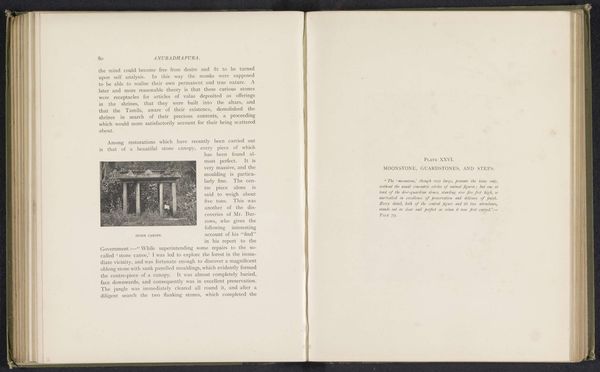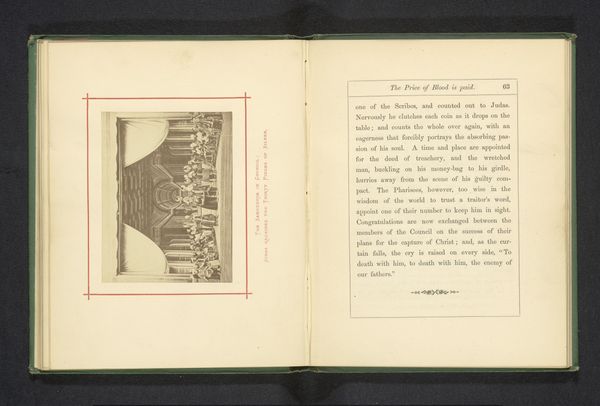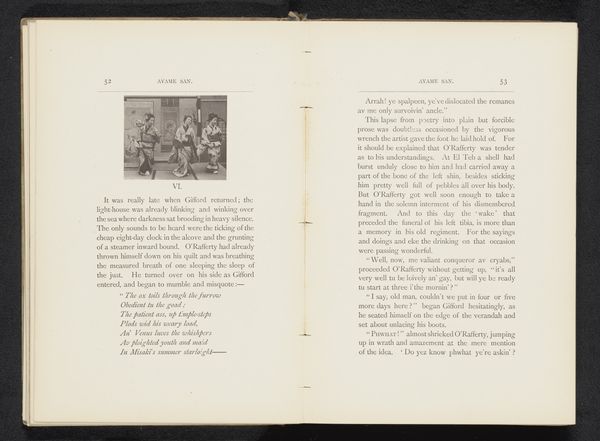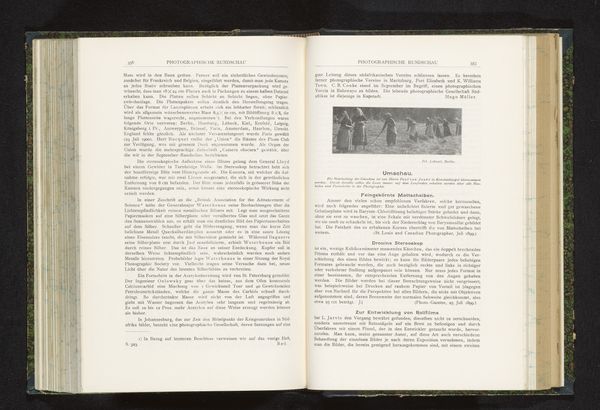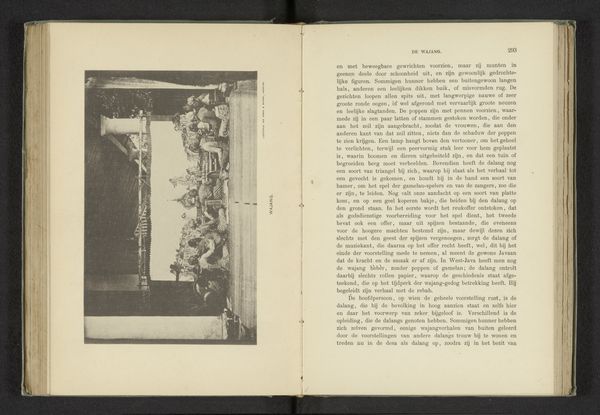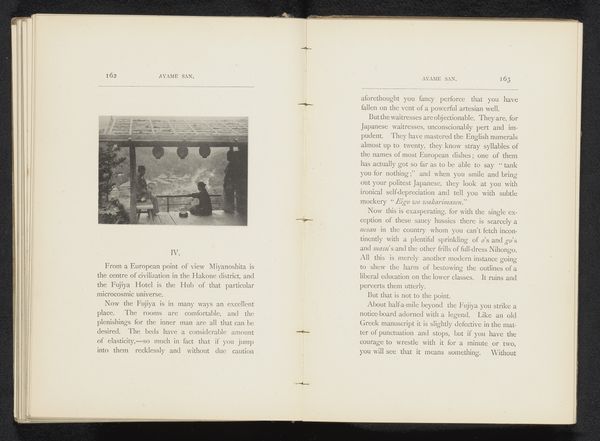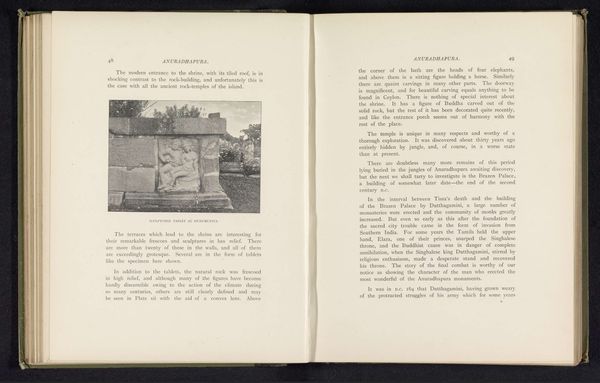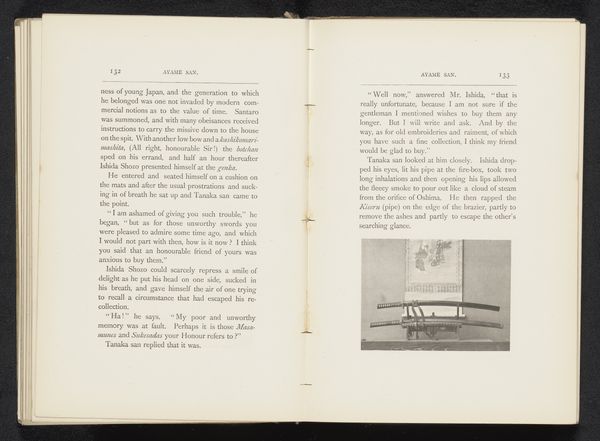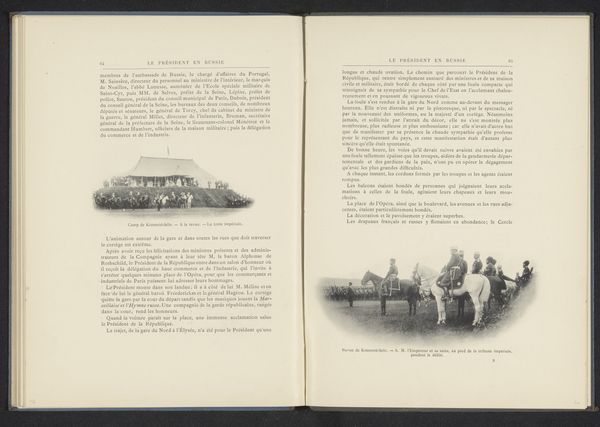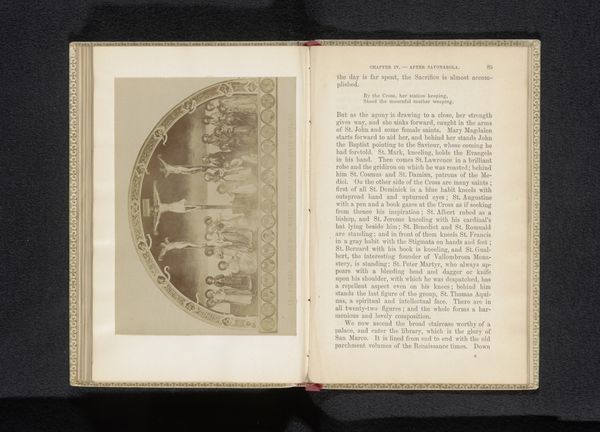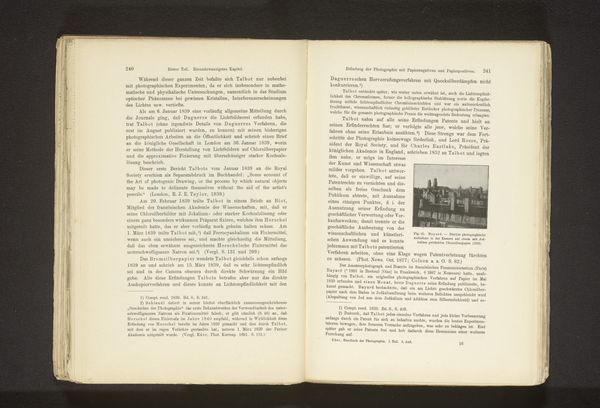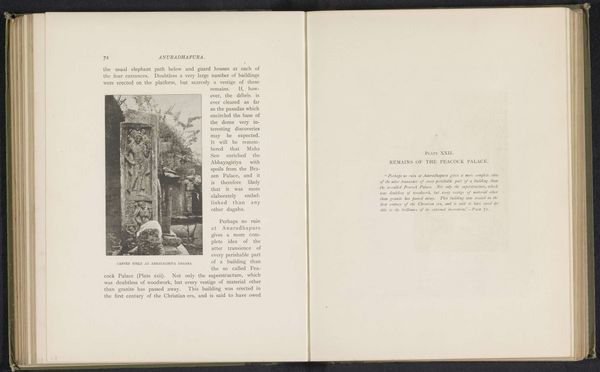
print, photography
# print
#
asian-art
#
landscape
#
photography
Dimensions: height 79 mm, width 120 mm
Copyright: Rijks Museum: Open Domain
Curator: Alright, let’s delve into these “Frescoes at the Aluwihari Rock Temple” from 1896, as captured in this print by Henry William Cave. Editor: What strikes me first is the way the image is framed within the book, the text surrounding it giving context… But as for the artwork itself, the rows of elephants, combined with the elaborate mural, give off a feeling of grandeur and perhaps reverence. What do you see in this piece? Curator: It’s fascinating how Cave's print acts as a historical document itself, showing not just the frescoes but also how they were being disseminated and perceived at the turn of the century. Considering Cave’s audience was likely Western tourists and scholars, how does the visual emphasis on the elephants – which carry strong symbolic weight – shape their understanding of Sri Lankan Buddhism? Are they exoticized or respectfully represented? Editor: That’s a great point, especially considering the intended audience. The elephants are prominent, almost like a visual shorthand for "the East". Curator: Precisely. And thinking about the politics of imagery, how does this printed reproduction, circulating within a colonial context, contribute to or challenge the prevailing Western narratives about Buddhism and Ceylon – now Sri Lanka? Is it promoting understanding, or reinforcing a sense of Western authority through documentation and display? Editor: I never really considered how the act of photographing and publishing could be interpreted that way. I guess it’s easy to overlook the power dynamics at play. Curator: Indeed. By looking at the context in which it was produced, this photograph tells more about the culture, power structures, and history behind the scenes than meets the eye. The cultural context frames not only the work of art shown, but the image and its viewer as well. Editor: Absolutely! This discussion really highlighted how a seemingly simple photograph can open up layers of complex histories and power relations, like the layers behind the print of this temple. Thank you! Curator: My pleasure, it's all about looking closely at what is presented, but also considering the hands that have worked towards getting the art piece in front of our eyes.
Comments
No comments
Be the first to comment and join the conversation on the ultimate creative platform.
